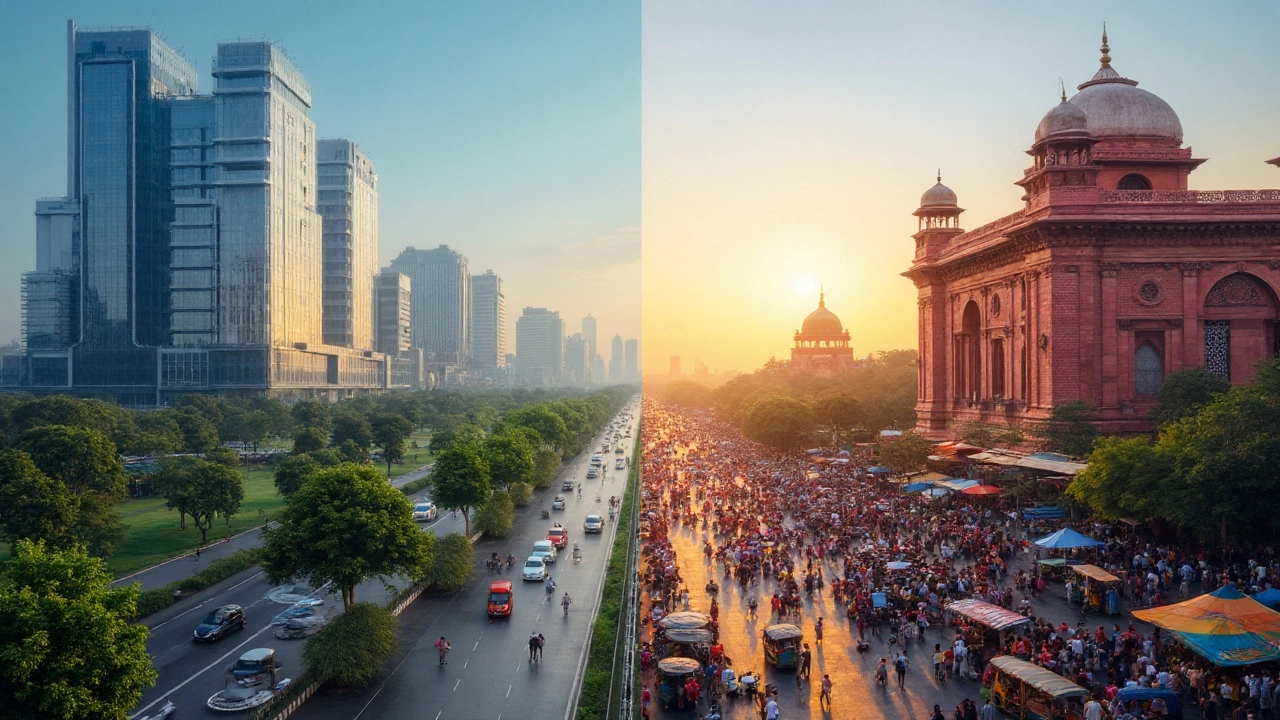
Explore a data‑backed look at whether South India is richer than North India, comparing GDP, per‑capita income, HDI, FDI, literacy and more.
When discussing South India wealth, the mix of rapid economic growth, cultural depth, and high‑end tourism in India's southern states. Also known as Southern India's prosperity, it guides infrastructure, luxury accommodations, and heritage projects across the region.
This wealth isn’t just about numbers; it translates into real experiences for visitors. South India wealth means you can find world‑class hotels near ancient temples, premium safari lodges beside protected forests, and beachfront villas that overlook turquoise waters. Travelers who chase comfort and authenticity often follow the money trail, because where investment flows, quality services follow.
One pillar is heritage sites, the centuries‑old monuments, forts, and temples that attract cultural tourists and high‑spending scholars. The region boasts over 1,500 protected sites, from the marble brilliance of Hampi to the intricate carvings of Mahabalipuram. The wealth generated by ticket sales, guided tours, and souvenir markets helps fund restoration, ensuring these landmarks stay vibrant for future generations.
Another pillar is wildlife sanctuaries, protected areas that host tigers, elephants, and rare birds, drawing eco‑luxury travelers. States like Karnataka and Kerala lead with the highest number of sanctuaries, turning conservation into an economic engine. Luxury tents and boutique resorts near these habitats charge premium rates, turning preservation into profit.
Coastal tourism forms the third pillar. beach destinations, the sun‑kissed shores of Goa, Karnataka, and Tamil Nadu that cater to both backpackers and upscale vacationers, benefit from infrastructure upgrades funded by rising regional wealth. High‑end beachfront resorts, yacht charters, and seafood gastronomy all thrive when local economies invest in ports, roads, and clean‑up projects.
Don’t forget the cooler side of the market – hill stations, mountain retreats like Ooty, Kodaikanal, and Coorg that attract seasonal luxury seekers. Wealth fuels better roads, boutique chalets, and adventure sports facilities, making these high‑altitude getaways profitable during the hot months.
These entities interlink tightly. South India wealth encompasses heritage sites, wildlife sanctuaries, beach destinations, and hill stations. It requires continuous investment in infrastructure, which in turn boosts tourism revenue. The more visitors spend on premium experiences, the more funds flow back into preservation and development, creating a virtuous cycle.
Travel safety also ties into this equation. Growing affluence allows authorities to improve policing, health services, and emergency response, making the region safer for tourists. A safe environment encourages higher visitor numbers, which again supports the economic engine.
Cost considerations matter too. While luxury options are plentiful, the overall cost of traveling in South India remains attractive for many international visitors, especially those from the US. This price advantage fuels demand for high‑quality experiences without breaking the bank.
In short, the wealth of South India is a multi‑layered phenomenon. It fuels cultural tourism, protects wildlife, beautifies beaches, and upgrades hill stations, all while keeping safety and affordability in mind. Below you’ll find a curated collection of articles that dive deeper into each of these aspects, offering practical tips, destination highlights, and insider insights you can use right away.

Explore a data‑backed look at whether South India is richer than North India, comparing GDP, per‑capita income, HDI, FDI, literacy and more.